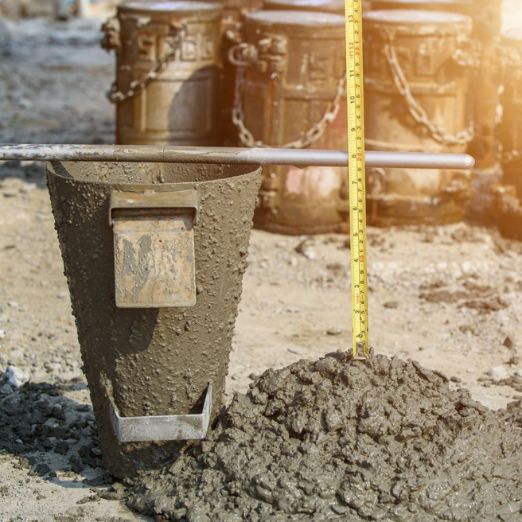The construction of a house or any structure is no longer what it used to be in the past. There are many aspects added to it by the galloping technology that make it a more secure and fulfilling business. One such aspect we will understand today is concrete workability tests for cement concrete.
What is a Concrete Workability Test?
The word “concrete workability” refers to how quickly freshly mixed concrete may be mixed, poured, cemented, and finished with little loss of homogeneity. Workability is a feature that has a direct impact on strength, quality, appearance, and even labour costs for placement and finishing operations.
Segregation of Concrete Workability
Concrete workability can be divided into three categories:
Unworkable Concrete: Unworkable concrete, often known as hard concrete, is concrete that contains very little water. It is tough to mix such concrete by hand. The aggregates in this form of concrete are highly segregated. It is also quite difficult to keep the concrete mix homogeneous.
Medium workable concrete: Most building projects employ medium workable concrete. This concrete is relatively simple to mix, transport put, and compact without significant segregation or loss of homogeneity.
Highly Workable Concrete: This concrete is extremely simple to mix, transport, put, and compact. It is utilized when adequate concrete compaction is not possible. But there is a common opinion that highly workable concrete lacks homogeneity.
Widely Used Types of Concrete Workability Test
Slump Test
The purpose of a concrete slump test or slump cone test is to measure the workability or consistency of a concrete mix prepared in the laboratory or on the construction site while the work is being done.
Concrete slump tests are performed from batch to batch to ensure that the quality of the concrete is consistent during construction. The slump test is the simplest basic workability test for concrete since it is inexpensive and offers rapid results.
Kelly Ball Test
The Kelly ball test, also known as a ball penetration test, is used to determine the workability of freshly mixed concrete. It is a quick and easy field test that is used as an alternative to the slump test.
It is made up of a metal ball that is hemispherical in shape and weighs around 13.6 kilos (30 pounds). The metal ball has a diameter of about 15 cm (6 inches).
A frame is placed between the ball and the stem, allowing the stem to glide through it when the ball moves vertically. During testing, the frame is usually resting on the concrete surface.
Flow Table Test
The flow test is used to determine the workability of concrete. The flowability or fluidity of concrete is examined in this test to determine its workability. The flow test is a straightforward laboratory examination. This test is based on the jolting of the standard mass of concrete and is measured by the flow of concrete. Concrete flow reveals the workability of the material.
How to Improve Concrete Workability?
Some methods for increasing workability include:
Increasing the water-to-cement ratio
- Making use of a greater aggregate
- Using well-rounded and smooth aggregate rather than irregularly shaped aggregate
- Increase the mixing time and temperature
- Making use of non-porous and saturated aggregate
- With the addition of air-inducing chemicals
- Including necessary admixtures
Wind-Up
The workability of a raw or new concrete mixture is a property. In layman’s terms, workability refers to the ease of placement, while workable concrete refers to concrete that can be easily poured and compacted without segregation.
Workability is an essential attribute of concrete that is connected to compaction and strength. The desired workability varies depending on the type of concrete. A thin inaccessible part or substantially fortified section requires more workability than a mass concrete body. As a result, we cannot establish a workability standard for all casting jobs.

